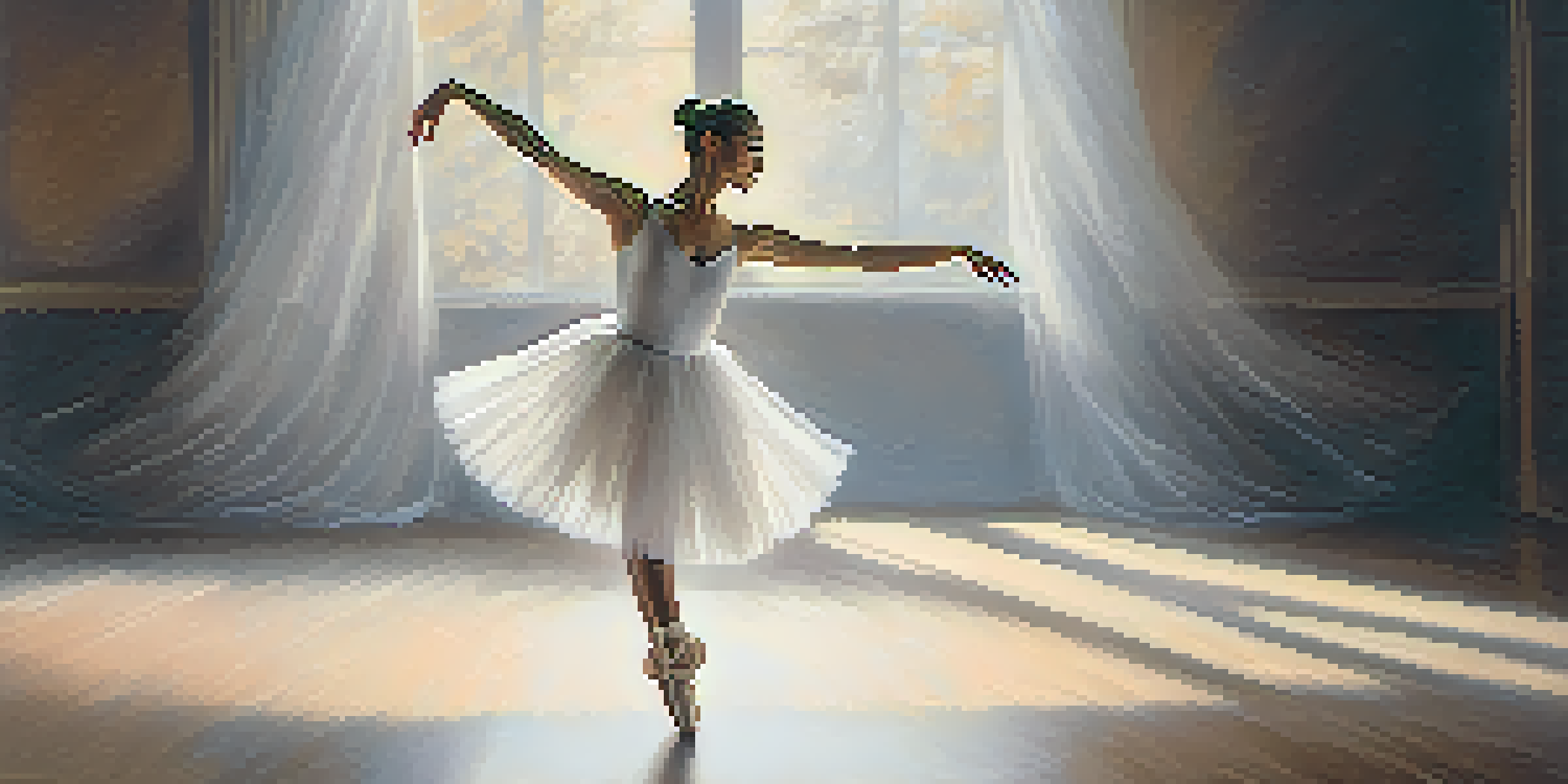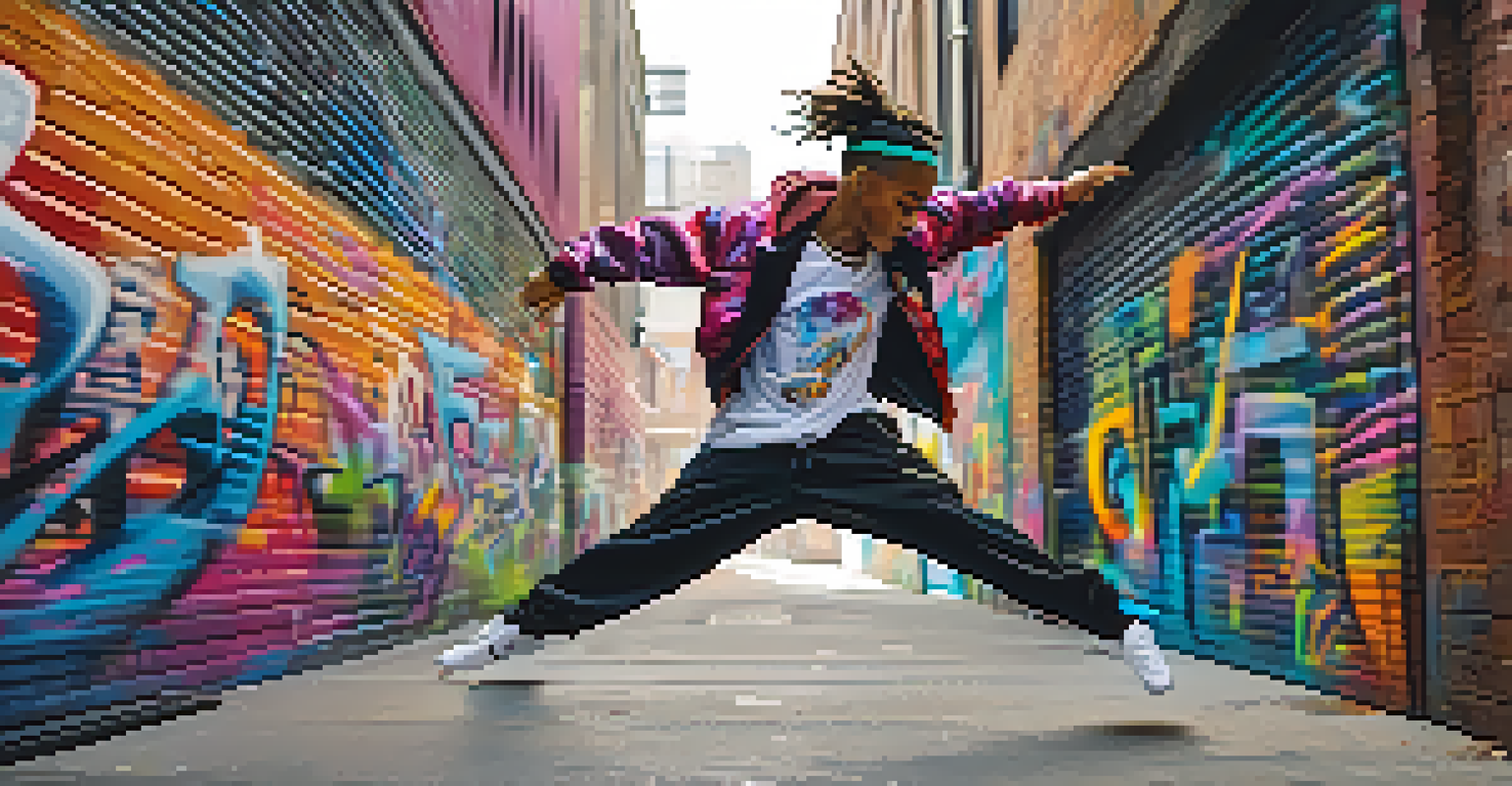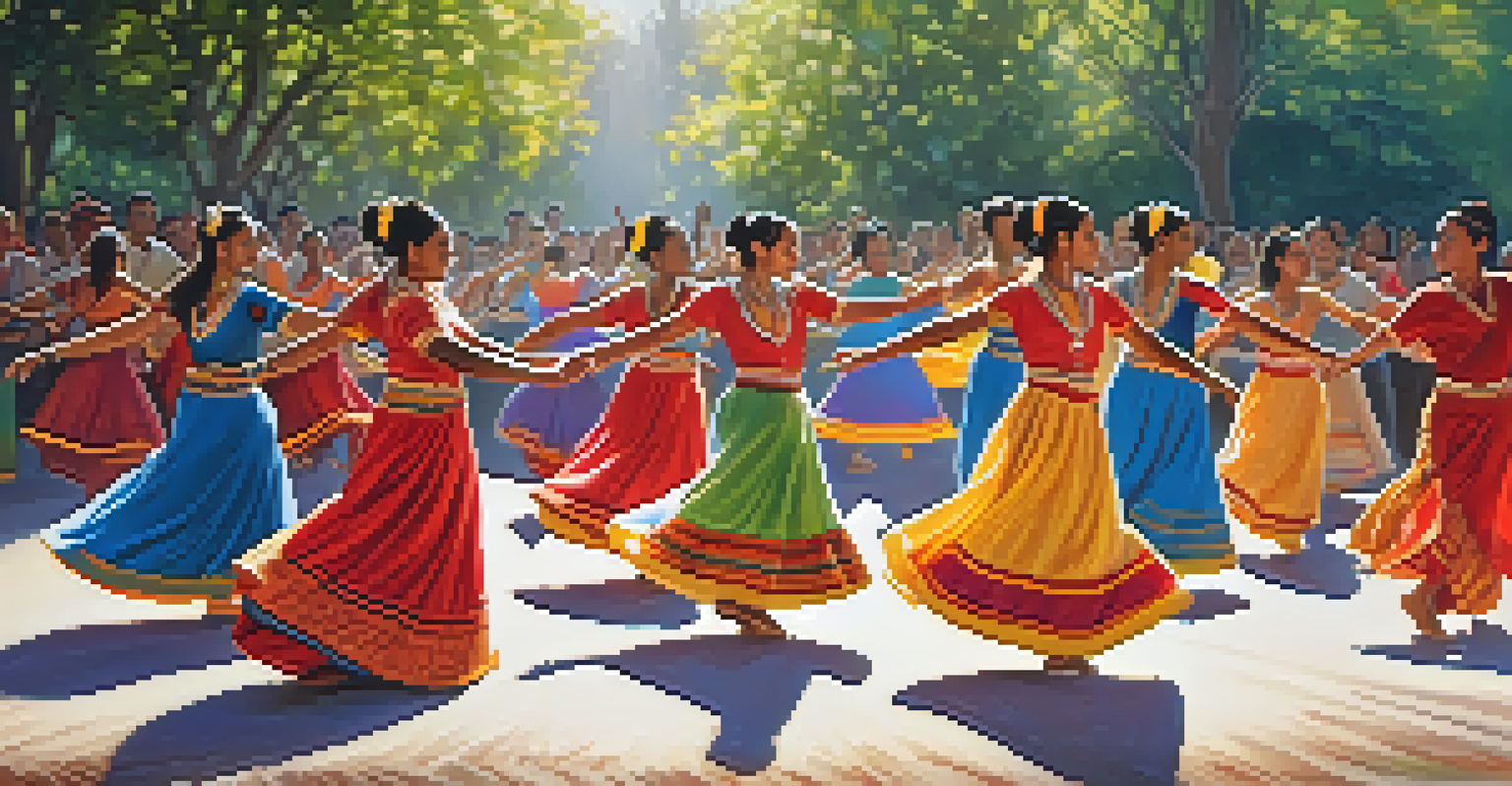Emotional Expressions in Dance: A Non-Verbal Language

Understanding Dance as a Universal Language
Dance transcends cultural boundaries, acting as a universal language that communicates emotions. Regardless of the style—be it ballet, hip-hop, or folk dance—each movement conveys feelings that words sometimes cannot capture. This non-verbal communication allows dancers to express complex emotions like joy, sorrow, or excitement, creating a shared experience with the audience.
Dance is the hidden language of the soul.
When we watch a dancer move, we often find ourselves resonating with their emotional expressions. For instance, a graceful ballet performance can evoke nostalgia, while an energetic hip-hop routine might inspire enthusiasm. Through the rhythm and flow of their bodies, dancers invite us into their emotional world, often leaving a profound impact without uttering a single word.
This non-verbal language of dance highlights the power of human expression, reminding us that emotions can be felt and shared in myriad ways. By tapping into this intrinsic form of communication, dancers bridge the gap between themselves and their audience, fostering connections that go beyond spoken language.
The Role of Body Language in Dance
Body language is a crucial component of dance, serving as the primary method through which emotions are conveyed. Every gesture, posture, and movement carries significance, working together to tell a story or express a feeling. For instance, an open stance might convey warmth and approachability, while a closed posture could suggest defensiveness or sadness.

Dancers train to master their body language, ensuring that their movements align with the emotions they wish to evoke. A well-executed pirouette can symbolize joy, while a slow, flowing movement may represent a sense of longing. The subtleties of body language in dance create layers of meaning, allowing audiences to interpret emotions in their unique ways.
Dance as a Universal Expression
Dance transcends cultural boundaries, serving as a powerful non-verbal language that conveys emotions without words.
As audiences, we often instinctively read these cues, responding emotionally to the dance performance. This innate understanding of body language enhances our appreciation of dance, creating a deeper connection between performer and viewer. Thus, body language in dance is not just about movement; it's about the emotional narratives those movements create.
Facial Expressions: The Silent Storytellers
Facial expressions play a pivotal role in dance, acting as silent storytellers that enhance the emotional depth of a performance. A dancer's face can express joy, anguish, or anger, subtly guiding the audience's emotional response. When combined with movements, these expressions create a powerful synergy that captivates spectators.
To watch us dance is to hear our hearts speak.
For instance, a dancer performing a passionate leaping sequence might pair their dynamic movements with a radiant smile, amplifying the joy of the performance. Conversely, a melancholic piece could be complemented by downturned lips and a furrowed brow, drawing viewers into a more somber narrative. The combination of body and facial expressions creates a more holistic emotional experience.
By focusing on facial expressions, dancers can communicate emotions that words might fail to articulate. This aspect of dance emphasizes the importance of the entire body as an expressive tool, highlighting that emotions can be conveyed through both movement and stillness, inviting the audience to feel alongside the dancer.
The Impact of Music on Emotional Expression in Dance
Music is an inseparable element of dance, profoundly influencing how emotions are expressed. The rhythm, tempo, and melody of a piece can shape the dancer's movements, guiding them to embody certain feelings. For example, a fast-paced song might inspire energetic, sharp movements, while a slow, melodic tune could lead to fluid and graceful gestures.
Dancers often interpret music through their bodies, allowing the emotional undertones to dictate their expressive choices. This connection between music and movement enhances the storytelling aspect of dance, as the audience can feel the emotions conveyed not just through the dancer's body, but also through the accompanying sound. It creates a multi-sensory experience that deepens emotional engagement.
Body Language Enhances Emotion
Every gesture and posture in dance tells a story, allowing dancers to express complex feelings through movement.
Ultimately, the interplay between music and dance showcases how these two art forms complement each other in expressing complex emotions. By understanding this relationship, audiences can appreciate the depth of emotional expression that arises from the synergy of movement and sound.
Cultural Influences on Dance and Emotion
Cultural backgrounds significantly shape how emotions are expressed in dance, creating diverse interpretations and styles. Different cultures have unique movements and traditions that convey specific feelings, enriching the tapestry of dance as a non-verbal language. For example, traditional African dance often emphasizes community and celebration, while contemporary dance might explore individual emotions and societal issues.
These cultural influences allow dancers to draw from a rich heritage, enabling them to communicate emotions that resonate with their identity and experiences. When dancers perform, they not only express their personal emotions but also embody the collective emotions of their culture, providing audiences with a glimpse into different emotional landscapes.
As audiences engage with these diverse forms of dance, they gain a broader understanding of emotional expression across cultures. This cultural richness enhances the universality of dance, demonstrating that while emotions may be personal, they are also deeply influenced by the world around us.
The Therapeutic Power of Dance and Emotion
Dance serves as a powerful therapeutic tool, allowing individuals to express and process their emotions through movement. Many people find that dancing can be a cathartic experience, providing an outlet for feelings that may be difficult to articulate verbally. Whether it’s through structured classes or free movement, dance encourages emotional exploration and release.
In therapeutic settings, dance movement therapy uses dance as a way to foster healing and personal growth. Participants often report feeling more connected to their emotions, gaining insights into their feelings and experiences. This connection between movement and emotion highlights how dance can serve as a bridge to understanding oneself better.
Cultural Influences Shape Dance
Cultural backgrounds significantly influence how emotions are expressed in dance, enriching its diversity and depth.
Moreover, the communal aspect of dance can enhance emotional well-being, as individuals come together to share their experiences. This sense of community and support can amplify the therapeutic benefits, allowing individuals to feel less isolated in their emotional journeys. Thus, dance becomes not just a form of expression, but a means of healing.
Conclusion: Dance as a Language of Emotion
In conclusion, dance stands as a profound non-verbal language that communicates emotions in ways that words often cannot. Through body language, facial expressions, music, and cultural influences, dancers convey complex feelings that resonate deeply with audiences. This rich tapestry of emotional expression invites viewers into a shared experience, fostering connections that transcend spoken communication.
As we engage with dance, we are reminded of the power of movement to articulate the human experience. Whether in a theater, a community space, or even a living room, dance has the ability to evoke empathy and understanding, allowing us to feel alongside the performers. It's a celebration of emotion, culture, and the shared human experience.

Ultimately, embracing dance as a language of emotion encourages us to look beyond words and appreciate the myriad ways we can connect with one another. So next time you watch a dance performance, take a moment to absorb the emotional expressions unfolding before you, and allow yourself to feel the stories being told without a single word.